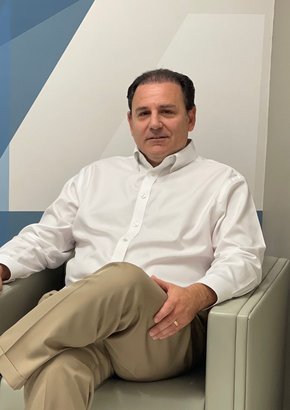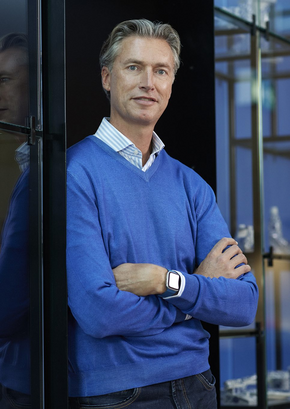
Krista Griggs
Head of Banking, Financial Services and Insurance Sector for Fujitsu UK

Krista Griggs is the Head of Banking, Financial Services and Insurance Sector for Fujitsu UK. As her title implies, Griggs’ role comes with big responsibilities; she is charged with leading revenue, profit and the growth of the sector.
Managing executive customer relationships, Griggs sets the vision and strategy for her department, leading a team of industry specialists and account executives and orchestrating from the wider organisation to bring the best of Fujitsu to its customers.
An influential leader in the makeup of Fujitsu’s UK division, it’s no wonder Griggs made FinTech Magazine’s Top 100 Women of 2022.
“Phenomenally proud and honoured to be featured”, Griggs takes inspiration from the women represented working to disrupt “what is still a male-dominated industry”.
As a pioneering woman in the predominantly male fintech industry, how did Krista carve out her own path to leadership?
Krista Griggs: The making of
Admitting she never had a clear ambition to take up a particular role, the position she finds herself at now “is well beyond” a point in her career she imagined after graduating as a software developer in her native Netherlands.
Not that she didn’t have an idea of what she wanted, it’s more that “roles in the technology space have grown and evolved so much” over the years – the professional capabilities she has now exceed what her formative career could ever teach her.
“I started out in financial services; I studied banking and finance,” says Griggs. “So it’s not a surprise I’ve come back to that.”
Griggs has returned to her roots after previously working in identity management, which saw her take up roles in government and defence sectors.
But working in a vast array of industries and sectors has only served to sharpen her skills today. “Working across different sectors has given me a real understanding of what impacts those business domains, what challenges there are and how technology can help to make that better,” Griggs says.
“From software developer to enterprise architect, I’ve always been leading on how you design that change. How does digital transformation actually work and what’s the impact it can have on user journeys across the ecosystem?”
These skills enabled Griggs to make an immediate impact when she joined Fujitsu UK five years ago, becoming Chief Architect for its Financial Services sector.
Frustrated with the constraints working in defence entailed, Griggs “came back into financial services because it is a hugely dynamic domain, where rapid change is the norm.”
Fujitsu was more of an infrastructure-managed services company when Griggs joined, with a mission to become a digital transformation company – something Griggs implemented the strategy for in the finance division.
It was the success of this strategy that saw Griggs become head of the sector just two years after joining Fujitsu. “I’m really proud of what I’ve achieved there,” adds Griggs.
“When I joined Fujitsu we were not progressing in the finance sector. We are now growing rapidly and doing really well. We’ve got a great team now that is connecting with our customers and building partnerships – helping clients to navigate industry change and deliver better outcomes for them.”
It is this success that has seen Griggs fall back in love with the industry she started out in. “I love being able to have a real ambitious vision for the future – to try and break the boundaries of what can be done. That is where the industry is really exciting and Fujitsu is firmly behind that.
“Change is always challenging, though. It has been quite a big culture shift for Fujitsu and our customers, particularly larger banks. There can be real inertia and complications in terms of getting things done when it comes to fintech innovation.
“So keeping pace with the rate of innovation can be a challenge. In many ways, my job isn’t necessarily delivering that change, but rather moving blockers out of the way.”
Read the full story HERE.


Featured Interviews
The key benefits for us in automation are reducing manual processes, reducing manual mistakes, and improving our efficiencies






